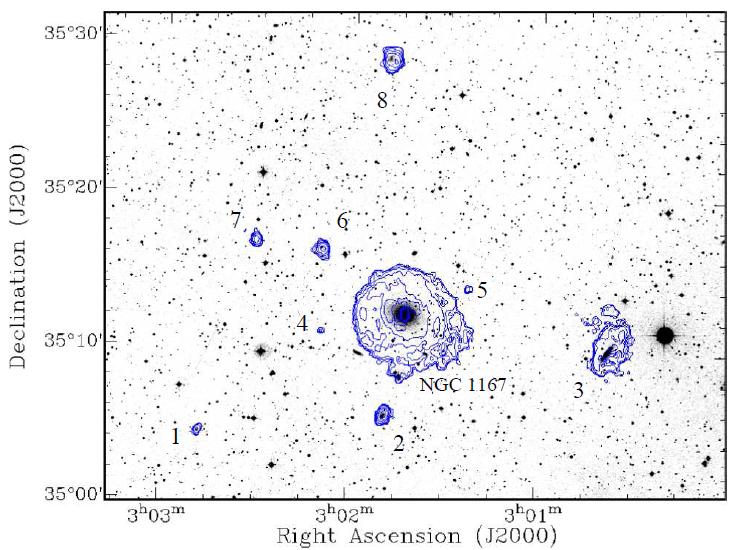Daily Image
25-10-2010Cold gas in massive early-type galaxies: The case of NGC 1167
| Submitter: | Christian Struve |
| Description: | How do galaxies accumulate their gas masses? Spiral galaxies constantly need to accrete gas in order to maintain star formation at the observed rates. In order to be able to evolve, early-type galaxies (ETGs) also need to keep on accreting cold gas. For instance, cold gas is required to explain the stellar kinematical properties, velocity dispersion features, or the dynamical structure of (disk-like) ETGs. The accretion/merging of fairly massive companion galaxies is one possible process to provide the required gas masses to ETGs, but other mechanisms can be important as well. In particular the slow but long-lasting infall of small cold gas clumps from the IGM is predicted. The massive early-type galaxy NGC 1167 was observed with the WSRT for more than 100h in order to investigate where the cold gas (neutral hydrogen) comes from. NGC 1167 has a giant, 160 kpc in size, regular rotating HI disk. In addition, various signs of recent satellite accretion, interaction and merging activities as well as eight nearby HI companions are detected (labeled in the above figure). In the south-west, the HI disk is not yet completely settled, supporting the picture of an ongoing assembly of the galaxy. No evidence, however, is found that small gas clumps from the IGM get accreted. This suggests that the HI disk is currently primarily formed through the accretion of companion galaxies which bring in large amounts of HI to NGC 1167 and that the accretion of small cold gas clumps is not an important disk building mechanism in this massive galaxy. The above results are published in C. Struve, T.A. Oosterloo, R. Sancisi, R. Morganti and B.H.C. Emonts (A&A, 2010 in press). A preprint of the paper can be found here: http://arxiv.org/abs/1009.0658 ). |
| Copyright: | Astron |
| Tweet |  |
